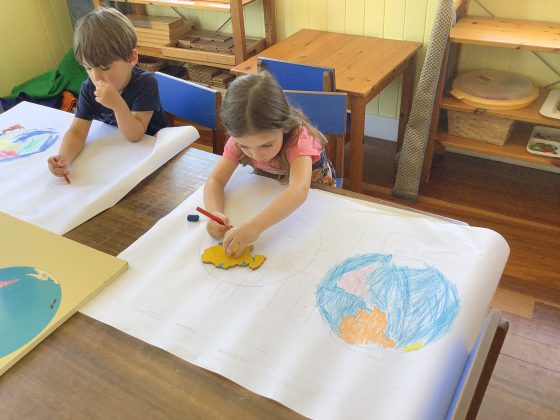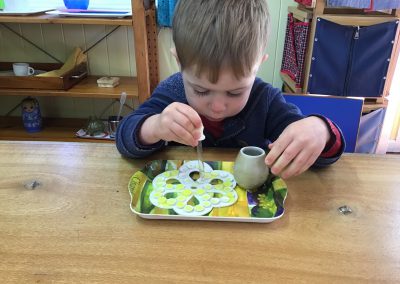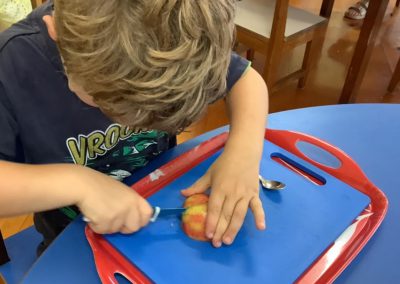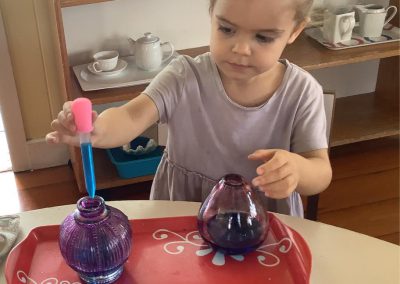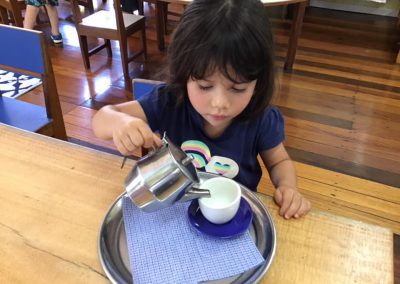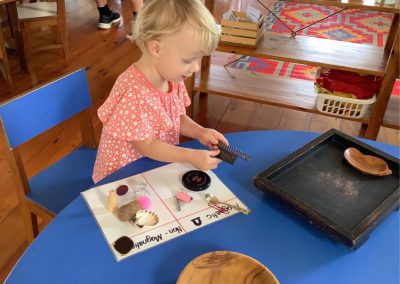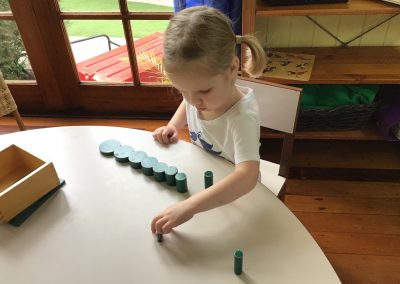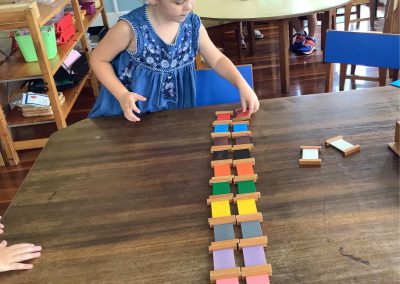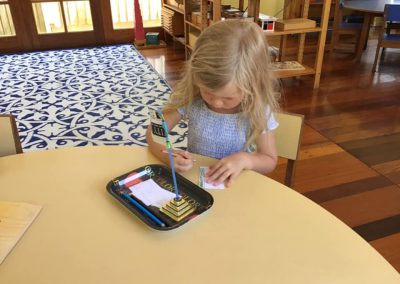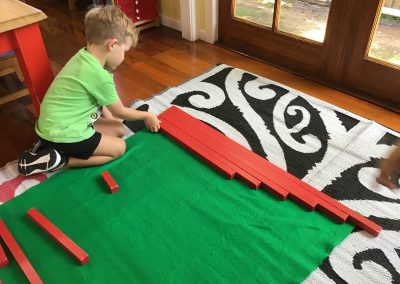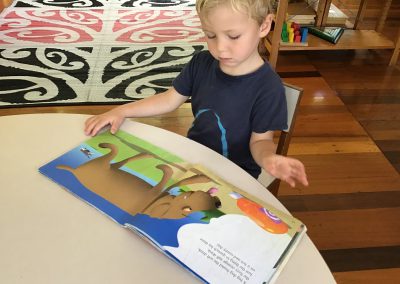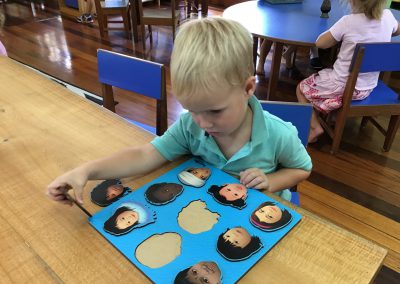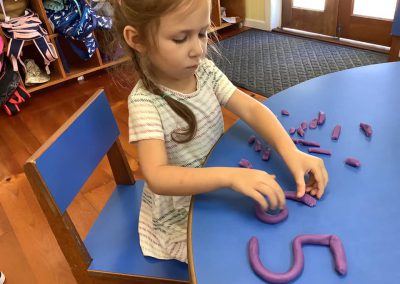In the Classroom
We have three classrooms in our centre; Each one is air-conditioned or heated for the cooler months. The classrooms have plenty of natural light and room to move about.
A Montessori Classroom
A Montessori classroom is an exciting place to be. It is activity-centered rather than teacher-centered. The teacher’s role is to prepare the classroom, set out the materials, and then observe the children and determine how to help. The teacher does not need to test the children because it is easy to see how the children are doing by observing their activities. Without threat of failure being imposed upon the child he or she can find all of the many intriguing things to do, discipline problems disappear, and a friendly, co-operative and social community forms. Co-operation, rather than competition, becomes the tone of the room.
A Montessori classroom is quite different from a traditional classroom. There is no front or back and decor is muted to create a peaceful environment that fosters a calm, joyful space for the children to learn in. Through their work the children develop concentration, motivation, persistence, and self-discipline.
Children are mixed in ages within a three-year developmental span. Older children learn patience and nurturing while younger ones are comfortable with more advanced Montessori equipment as they see it often. In a mixed age classroom, children can choose friendships based on common interests rather than just being the same age.
The classroom is arranged into five specialized areas of learning: Practical Life, Sensorial, Language, Math, and Culture (Culture covers the arts, music, geography, history and science). Within this prepared environment children are free to respond to their natural drive to work and learn – perhaps on a rug or at a table. They are encouraged to complete the work-cycle for each activity before selecting another one. The children have freedom to move about the room and use materials as they choose.
Practical Life
Practical life materials provide a link between home and school and enhance the development of concentration, coordination, develop fine motor skills, and independence. The activities instill care for one self, for others, and for the environment. These exercises include pouring liquids or dry materials, preparing food, washing dishes, setting a table, polishing shoes, cleaning, preparing food, working with dressing frames, cleaning windows, folding mats, and dealing gracefully and courteously with social encounters (how to wait, ask for help, table manners, greeting, etc.) Practical life activities are the foundation of all future academic work because they promote concentration, increased control of movements, eye/hand coordination, fine and gross motor skills.
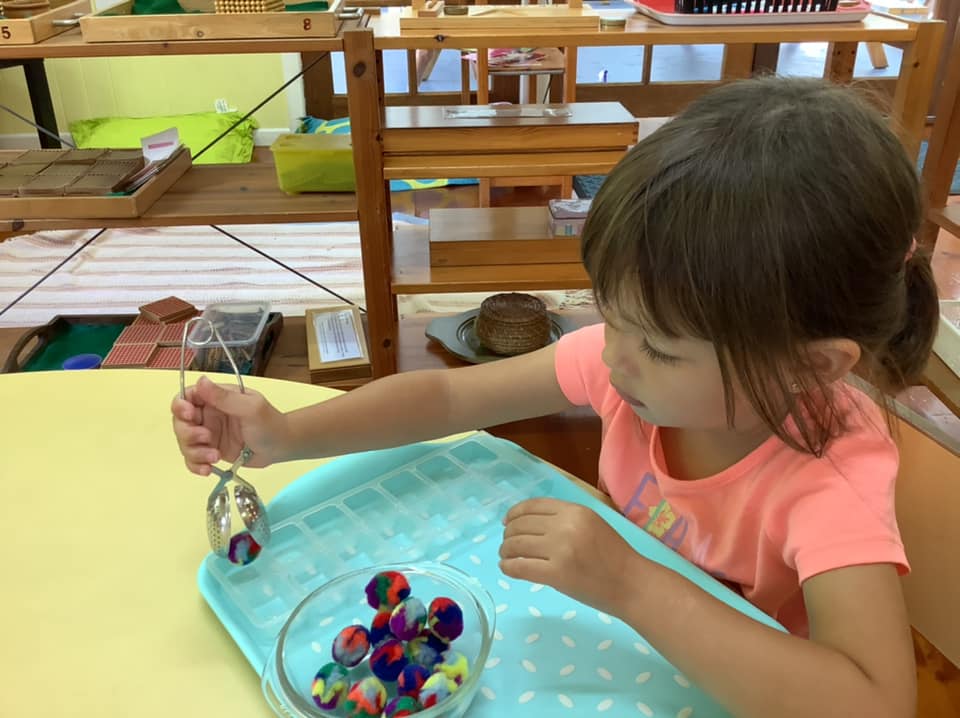
Sensorial Education
Dr. Montessori believed that Cycle One children (3–6 years) are sensorial explorers – soaking up every aspect of the environment, including language and culture. This area deals with the refinement of the senses, discrimination and classification. It is important because so much of our learning about our environment is done through our senses. Sensorial education includes such activities as the pink tower, cylinder blocks, knobbed cylinders, sound cylinders, colour tablets, geometric cabinet, etc.
The Sensorial materials are designed to enable a 3–6 year old child to identify and refine information obtained through their senses by seeing, smelling, tasting, listening, touching, and further exploring the sensorial properties of these materials. Dr. Montessori recognized the motto of this aged child to be “Help me do it myself”.
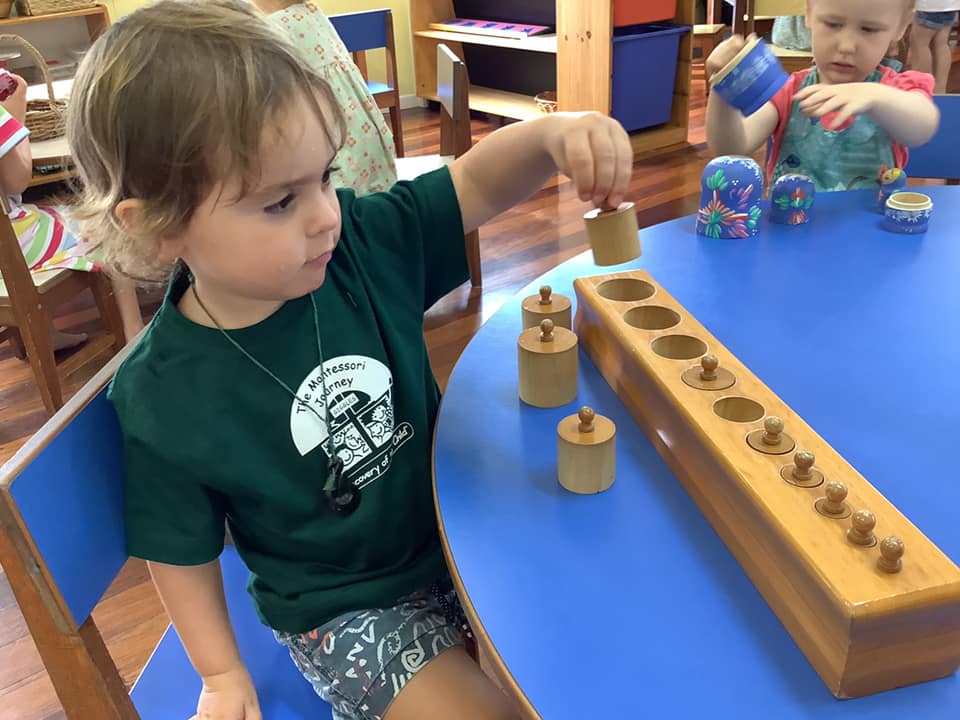
Language
Because the 3–6-year-old child’s mind is absorbent this is the ideal age to assist in the development of brain pathways. Dr. Montessori observed that a child of this age was in a ‘sensitive period’ for absorbing language, both spoken and written. The Montessori early childhood classroom is rich in oral language opportunities – listening to stories or reciting poems, singing, and conversing with others. The Sandpaper letter connects each spoken sound with its symbol supporting the development of writing and eventually reading. Some activities include insets which are pre-writing skills, sandpaper letters, the moveable alphabet, matching pictures to objects, pictures to words, labelling, etc.
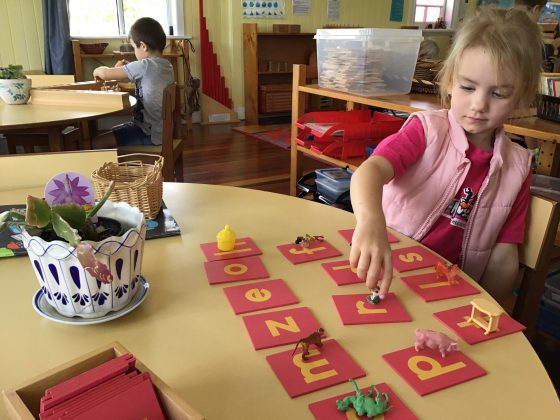
Math
The purpose of this area is to give a visual picture of the entire numeral system and to expose the child to quantity, symbol, and then to associate the two. Children are able to develop a visual image of what 10 looks like compared to 100 and how many 4795 really is. Numbers intrigue young children. The material in this area gives children a solid understanding of basic mathematical principles which prepares them for later abstract reasoning and helps to develop problem solving capabilities.
The children understand math concepts through the manipulation of concrete materials, building a secure foundation. Some of the materials include the sandpaper numbers, the red and blue number rods, cards and counters in aid of odds and evens, golden beads, teen board etc.
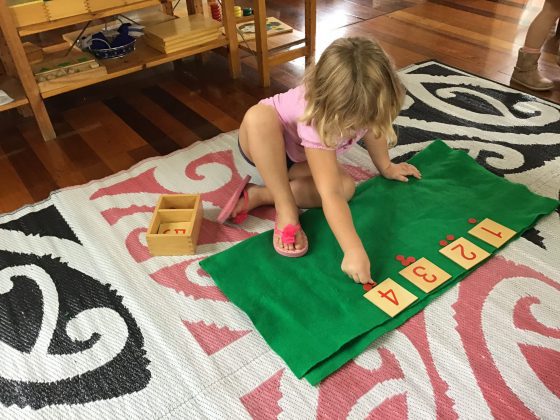
Culture and Art
Science, geography, history, art, and music are all incorporated into the early childhood environment. They are presented in sensorial ways with specially-designed materials and real-life experiences. Young children are natural scientists so watching and caring for classroom animals and plants creates an interest in science lessons.
In this area, the child learns to classify living and non-living, as well as learn parts of animals, plants, etc. They are introduced to the concept of time and the universe through timelines. In geography, children learn not only about the names of countries through map-making and land formations but the life of the people and their respective cultures. The child develops an understanding of the importance of life and begins to see his/her place in the world.
Art and music concentrate more on ‘process’ as against ‘product’. The children can explore art materials and enjoy what happens – there is no right or wrong way. We give children an opportunity for creative and joyful self-expression as well as exposure to the works of famous artists such as Monet, Picasso, Leonardo, and the great composers, Chopin, Mozart, Schubert, amongst many others. The children love to learn things that are real; Things they can relate to.
